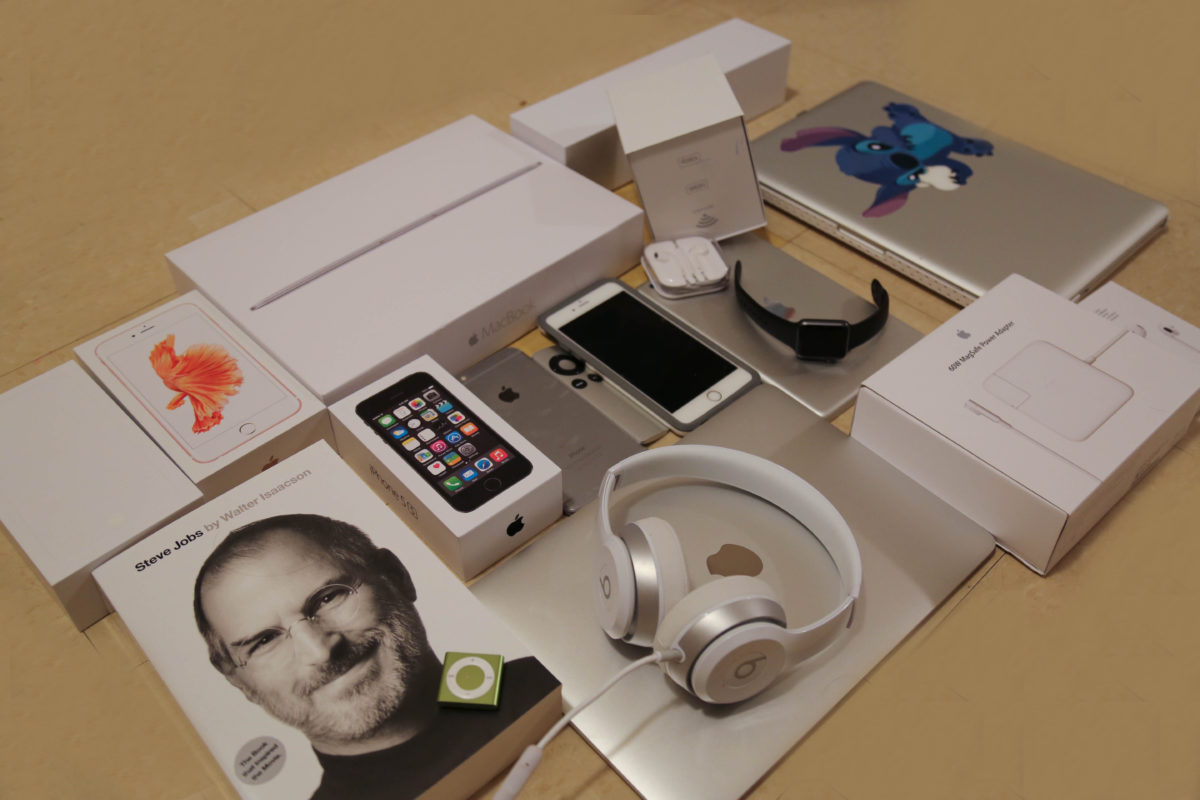
The iPhone 6S, released on Sept. 25, broke records selling over 13 million in the first three days. Their consistent ability in high sales sets Apple apart from other electronic corporations globally. So how has Apple been able to gain such a die-hard and loyal consumer base?
Jamie Gillies, a marketing and advertising professor at St. Thomas, said no other corporation has been able to mass market a better looking and functional product. Apple uses a certain advertising esthetic, especially since the Think Different campaign, to sell a luxury product with an everyday appeal.
“More people can recognize the bite out of the apple logo than any other in the world,” said Gillies. “And, at the same time, they sell us products that are premium… with a premium price tag.”
Gillies said from the beginning Apple’s designs have been innovative and made them “the cool outsider” to their competition. Since 2005, they’ve been the product “that everybody wants.”
Chantal LeBlanc-Everett, a television production coordinator in Toronto, waited six hours in line and paid $900 when the iPhone 3G was released. With a collection of 24 Apple products, LeBlanc-Everett upgrades her iPhone every other year.
“My experience with Apple has never been negative,” said LeBlanc-Everett. “Their customer service is by far the best in the market… Apple communities, online forums, solve almost 99 per cent of my problems, just by searching for the problem. Apple support by phone is exceptional and can solve most software related questions in under 10 minutes.”
LeBlanc-Everett said her industry is almost 100 per cent Apple dominated as it outperforms PC and Android in design programs. She said the fluidity between devices are important to her.
“I know that an Apple vs. Android stigma exists. We usually poke fun at each other for it,” said LeBlanc-Everett.
Gillies said the introduction of Apple to businesses was a break through caused by popular demand. Employees wanted to use Apple products so businesses transitioned away from PC, BlackBerry and Android.
Ryan Stengaard, a STU student, is technologically proficient. He is an Apple user himself but acknowledges Android maintains a competitive market.
“Apple revolutionized the cell phone market when they introduced the first iPhone,” said Stengaard. “Since then, Apple has continued to innovate but over the years a few competitors in the market have managed to keep up and even outpace Apple when it comes to new features and specs.”
He said often Android develops new capabilities before the iPhone, but when iPhone releases their own version they perfect and outperform these programs. With the exception of gaming capabilities, Apple has always been able to close the gap with the competition.
But Stengaard said Androids have been able to cater to a budget market that Apple, as a luxury item, tends to ignore.
“The main reason that the iPhones use is so widespread is due to subsidized prices or payment plans given through service providers. Without these options and in many cases even with these options, many people cannot afford an iPhone,” said Stengaard.
For Gillies, it all comes back to Apple’s marketing abilities and each new release is a remarkable event. He said this is only the release of a special edition, not even the next full upgrade, which shows incredible customer loyalty.
“Often ads make you feel bad because you can’t afford something,” said Gillies. “But Apple makes you feel good even if you don’t have one. I don’t know how they do that. I teach marketing and advertisement and I’m still not quite sure how that’s done.”
